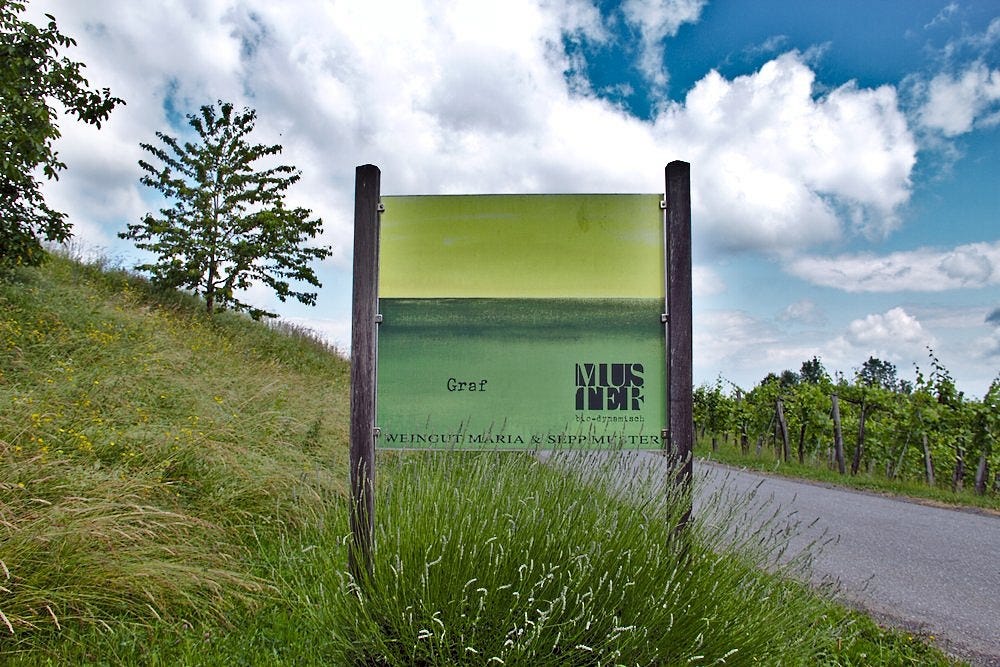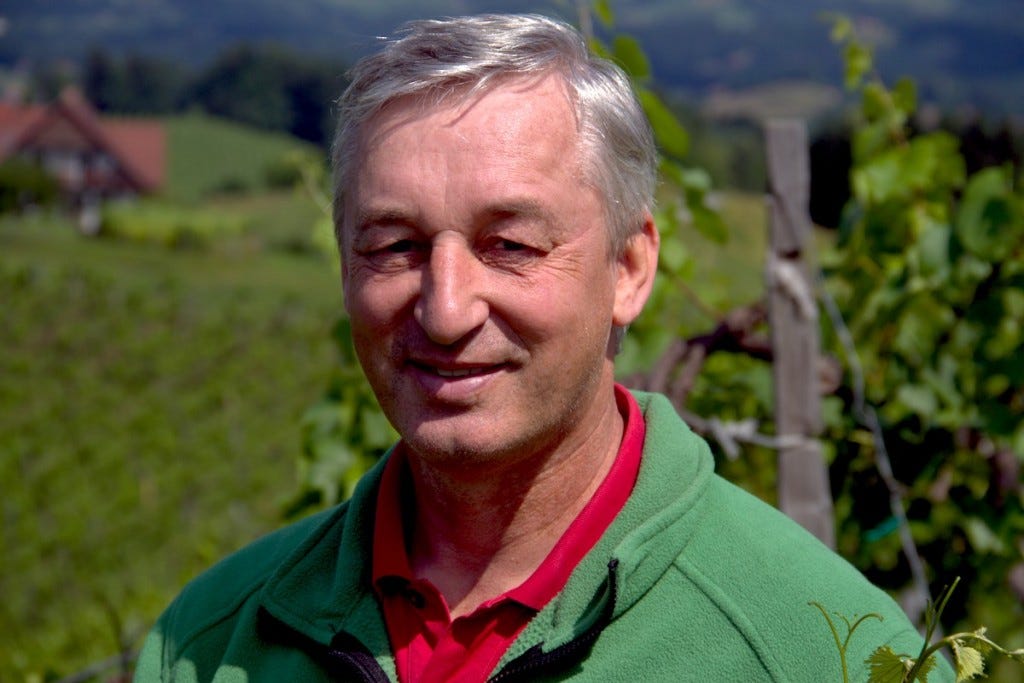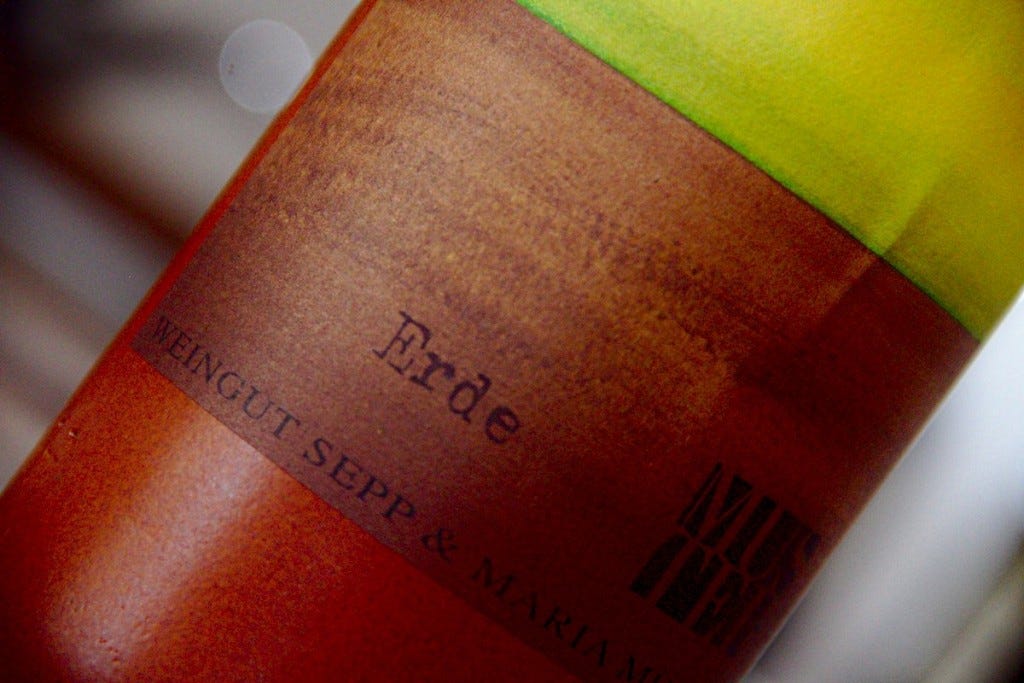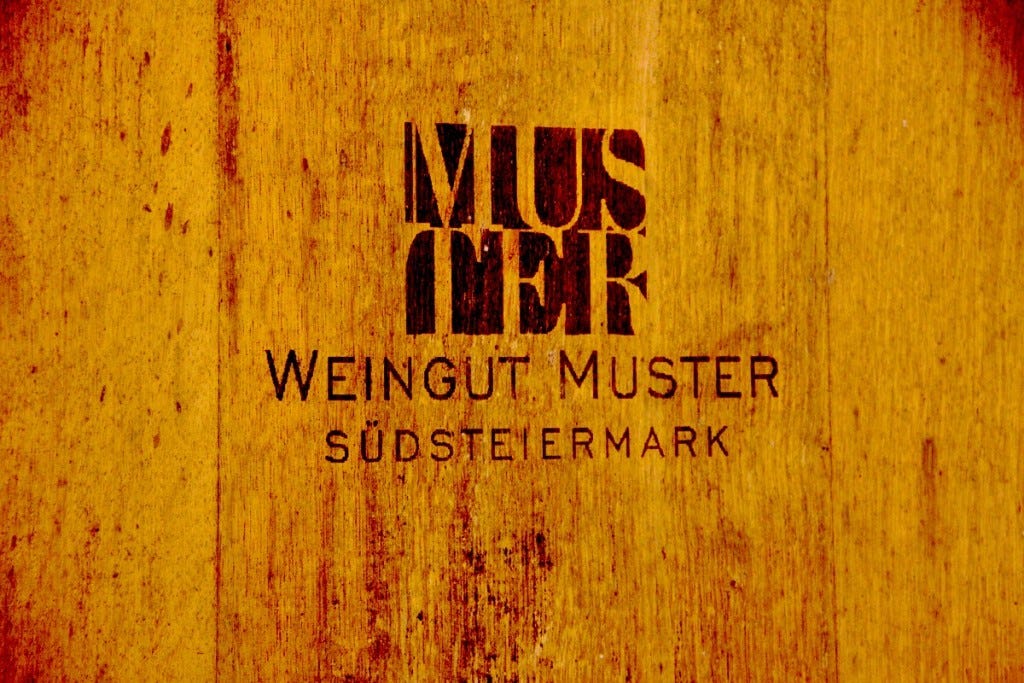If you made a list of the world's most vertiginous wine regions, Southern Styria would certainly be amongst them. Vineyards sprawl up and down extraordinary gradients, at unlikely angles to each other. It's a breathtaking, individual landscape, and therefore quite fitting that the area is home to some of Austria's most unconventional wines and producers.
Sepp and Maria Muster are one of five growers in the area who jointly go under the name "Schmecke das Leben" or Taste Life, to translate. The ethic here is biodynamic (certified Demeter Austria) and hands off in every way. Muster and his wife were inspired on a visit to India in 1998, where they met Peter Proctor, a New Zealand biodynamic advocate. Perhaps I imagine it, but there does seem to be an almost zen-like calm at Weingut Muster, at least on the lovely summer morning when we visit.
Muster recounts "I saw for the first time that to be a farmer isn't necessarily about intervention, it's more about watching nature". This laissez-faire attitude is key to Muster's way of vinegrowing and winemaking. He goes further: "We watch what's going on with the earth and the sun and we adjust. Or sometimes we even try to adjust our palate - that can be a better approach"
As you might expect, this philosophy translates into a fair amount of vintage variation - and Southern Styria (Südsteiermark to give it its non-anglacized name) doesn't have the most reliable climate. Years like 2013 were hot and dry, then in 2014 the heavens opened and barely shut all summer long. We taste a 2012 Gelber Muskateller (Yellow Muscat) 2012, a mere 10.5% in alcohol, featherlight, ethereal and bone dry - a great example of letting the vintage dictate the style, and a beautiful if unusual wine.
Muster doesn't seem at all perturbed by the poor conditions in 2014, a year where some neighbouring producers saw yields plummet by as much as 50% - "2014 for me is a gift - we have wines between 9.5 - 11% alcohol, and we didn't have to harvest early. It's a different style, but it's good".
Skin contact
Muster was inspired to start using long skin macerations by blind tasting a wine which he described as "A wine with texture, but also freshness". It turned out to be Gravner's Breg 2001. Since 2005, he makes two "orange wines", Gräfin and Erde. The former is 100% Sauvignon, left on its skins for 2-4 weeks, but my favourite is the more substantial Erde. A blend of 80% Sauvignon and 20% Chardonnay (called Morillon locally) receives six months of skin contact in used oak barrels, before further ageing in the distinctive clay bottles in which it is sold.
The 2012 Erde feels energetic, yet super focused and refined. The aromatics are a bit earthy, jasmine and herb-scented. Ripe apple, ginger and citrus fruit are supported by a substantial, spicy undertow. The tannins are very fine but assertive, reminiscent of a Beaujolais Cru perhaps. It's lipsmacking, moreish and long in the mouth.
I wonder how easy it was to sell these wines in 2005, when the style was almost unheard of in Austria. Muster explains "The orange wines were actually easier to sell than our white wines in the beginning. People had a certain expectation of what the white wines should be like, which didn't match up with what they tasted, whereas they didn't have any idea what the orange wines should be. Now Gräfin is our biggest seller!".









